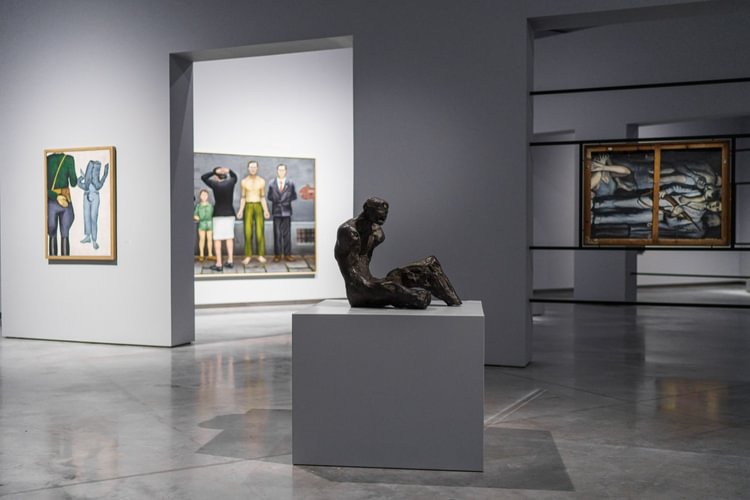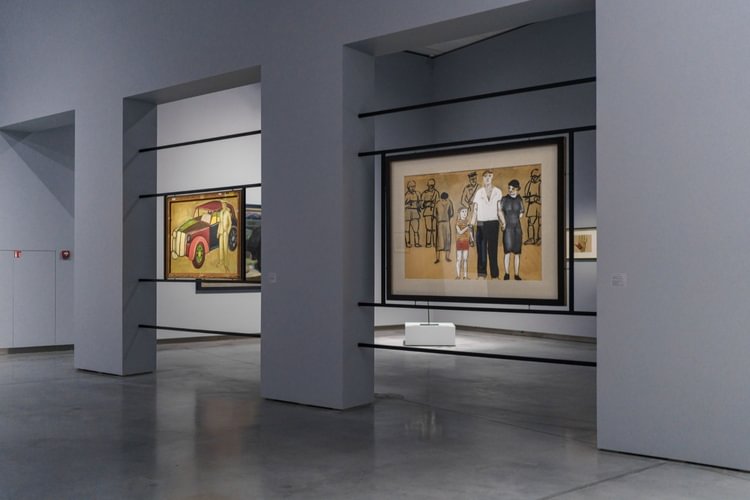Exhibition in Vilnius Highlights Polish Art and History
March 25, 2021. After 4 months of pandemic-related shutdown, MO Museum, a modern art museum, operating in Vilnius, the capital of Lithuania, has finally opened its doors with two new Polish-influenced exhibitions: “A Difficult Age. Szapocznikow—Wajda—Wróblewski,” featuring critically-acclaimed Polish artists, their experiences in the post-war period and their ties to Vilnius. Also on display—“A Difficult Age. Vilnius, 1939–1949,” that revolves around the multiethnic issues and the change of the cities throughout the dramatic decade.
The most ambitious MO Museum’s exhibition so far, “A Difficult Age. Szapocznikow—Wajda—Wróblewski,” is built in collaboration with 25 foreign museums, galleries and private collections, and displays around 120 art pieces from 5 countries. The exhibition, which was first displayed in Katowice back in 2018, is curated by Anda Rottenberg, Polish art historian and curator, and contains the works of 3 well-known post-war Polish artists: film director Andrej Wajda, conceptual sculptor Alina Szapocznikow, and painter Andrzej Wróblewski. The name of the exhibition reflects both the historical time and a significant period for the said artists—adolescence.
The project has been co-financed by the Ministry of Culture and National Heritage of the Republic of Poland and coordinated through the partnership with the Adam Mickiewicz Institute in Warsaw. "This is yet another project of the Institute that presents the works of the most prominent Polish post-war artists. After "Waiting Room", last-year's successful exhibition of Andrzej Wróblewski held in the Slovenian Moderna Galerija, we bring the body of works of the post-war generation of artists to Lithuania to allow the local audiences to discover how similar experiences have been interpreted through painting, film and sculpture" – says Barbara Krzeska, Deputy Director of the Adam Mickiewicz Institute.
The second exhibition, “A Difficult Age. Vilnius, 1939–1949,” although smaller in scope, is an essential continuation of the first and pays a tribute to Wróblewski who grew up in Vilnius. The artist’s ties with the city is one of the reasons for organising the exhibitions in MO Museum in the first place. The art pieces convey the challenging period for the capital and the changes brought by the war in terms of architecture, culture, and ethnic environment.
“This exhibition is dedicated to Vilnius and its Polish residents, who faced expulsion and suffered through other painful events, which were left untold for so many years. The city’s physical body changed as well—which is evidenced by the altered urban planning and architecture,” Giedrė Jankevičiūtė, Exhibition Curator at MO Museum, elaborated on the exhibition. “All of these transformations are revealed in this exhibition through a collection of artefacts: works of art, photography, documents, and architectural plans.”
MO Museum was forced to postpone the opening date of the exhibitions due to the country-wide lockdown. Ensuring that all necessary safety precautions are met, a limited number of visitors are able to visit the museum from March 20th.


